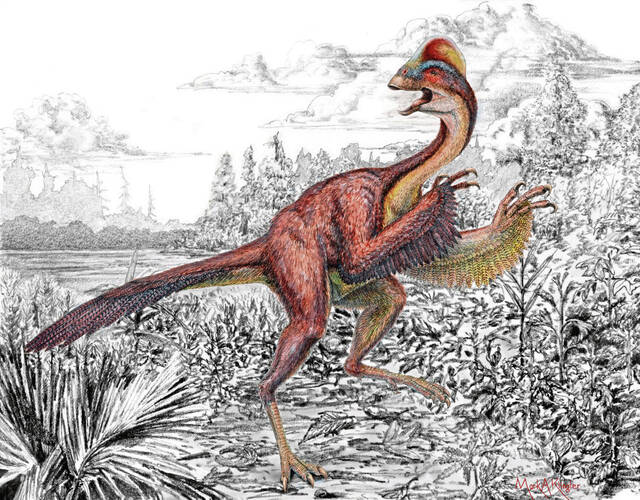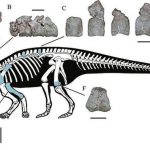An Indiana University of Pennsylvania graduate now shares his name with a new species of dinosaur, discovered in 2017 in China’s Yunnan province.
Molecular biologist John J. Kopchick is now the namesake of Yuxisaurus kopchicki, an armored dinosaur that is a distant cousin of the Stegosaurus. It lived between 174 million and 192 million years ago.
The remains of the new species were discovered by IUP biology professor Shundong Bi. Research on the specimens discovered in Yunnan’s Yuxi region began in 2019. News of the discovery was published last month in the scientific journal eLife.
Kopchick, an Indiana County native, earned bachelor’s (1972) and master’s (1975) degrees from IUP, both in biology.
He is the co-inventor of the drug Somavert, which combats the growth hormone disorder acromegaly, and is currently the Goll-Ohio Eminent Scholar and professor at Ohio University.
Bi first met Kopchick at an IUP reception.
“He was very interested in my research, and of course, I knew about his work and his contributions to IUP and to our college,” Bi said.
In 2018, IUP’s Council of Trustees approved the naming of the College of Natural Sciences and Mathematics in honor of Kopchick and his wife, Char, a 1973 IUP graduate who is the assistant dean of students at Ohio University.
Trustees also approved the naming of the university’s new science building — currently under construction — in honor of the Kopchicks in recognition of the couple’s generosity and support of IUP.
The Kopchicks made a $23 million gift to the university’s Imagine Unlimited comprehensive campaign in 2018 for science and mathematics initiatives at IUP. It is the largest gift in IUP’s history.
Kopchick said having his name associated with Yuxisaurus kopchicki was certainly one of the most unusual recognitions he has received.
“I’ve been blessed to have had several awards, but this is the best!” he said. “My colleagues think it’s absolutely cool, and I agree. And they want IUP to make and market stuffed ‘Kopchicki dolls,’ saying their kids would love them!”
Kopchick thanked Bi for the honor.
“Dr. Bi is an outstanding and talented researcher, scholar and teacher,” Kopchick said. “IUP is very lucky to have him, and I am very proud that he is a member of the talented faculty at my alma mater.”
More than 120 bone deposits were recovered from the Yuxi dig site, giving researchers enough material to confirm a new species.
The remains included multiple fragments of a single skeleton with parts of the armor plates, limbs, jaws and skull.
Bi, who was the senior author of the paper published by eLife, described the species in the publication as “possibly a facultative quadrupedal. It was primarily adapted for walking on four legs, but also able to walk on two legs.”





















